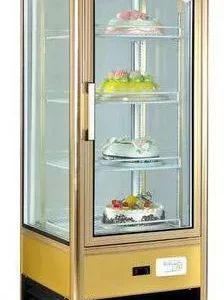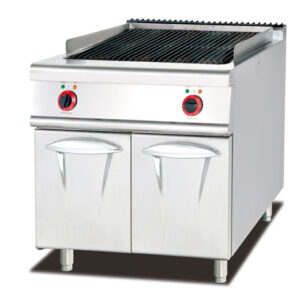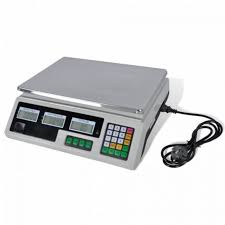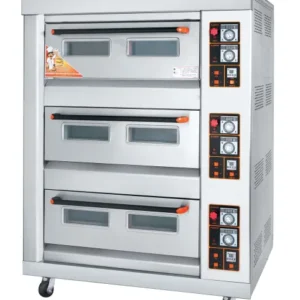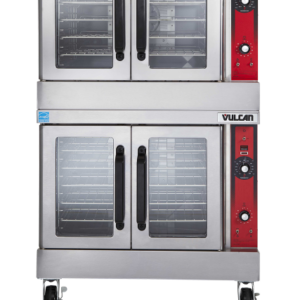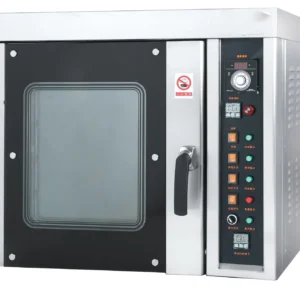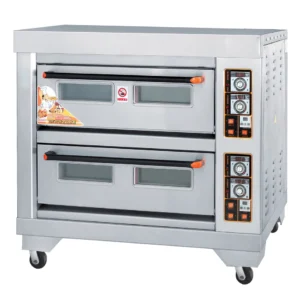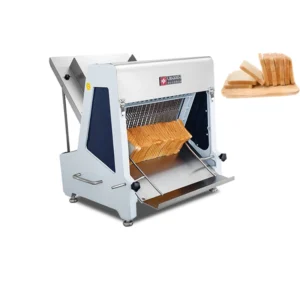Baking Equipment: Essential Baking Equipment for Every Bakery in Nigeria

Introduction
Whether you’re a seasoned baker or just starting out, having the essential baking equipment is crucial for success. In this comprehensive guide, we’ll explore the must-have baking equipment for every bakery, specifically focusing on those available in Nigeria. From mixers to various oven types, dough rolling machines, and additional tools, we’ll cover everything you need to know to equip your bakery for success.
Whether you’re looking to upgrade your kitchen or a professional baker setting up a new bakery in Nigeria, this guide is your go-to resource for selecting the essential baking equipment that will take your creations to the next level.
Here’s a list of essential baking equipment for a bakery:
- Oven: A reliable oven is essential for baking various goods such as bread, cakes, pastries, and more.
- Mixer: Whether a stand mixer or a hand mixer, this equipment helps in mixing dough, batter, and other ingredients efficiently.
- Mixing Bowls: Multiple mixing bowls in various sizes are necessary for preparing different components of recipes simultaneously.
- Measuring Cups and Spoons: Accurate measurements are crucial in baking, so having a set of measuring cups and spoons is essential.
- Baking Pans: A variety of baking pans such as cake pans, loaf pans, muffin pans, and cookie sheets are needed for different baked goods.
- Rolling Pin: Used for rolling out dough for pastries, cookies, and pies.
- Dough Scraper: Helps in cutting and shaping dough accurately.
- Pastry Brush: Used for applying glazes, egg washes, and butter to baked goods.
- Cooling Racks: Essential for allowing baked goods to cool evenly and properly after baking.
- Pastry Bags and Tips: Necessary for piping frosting, filling pastries, and decorating cakes.
- Oven Thermometer: Ensures that the oven is at the correct temperature for baking.
- Proofing Baskets: Used for shaping and proofing bread dough.
- Pastry Blender: Helps in cutting fat into flour for making pie crusts and biscuits.
- Bread Lame: Used for scoring bread dough before baking.
- Pastry Cutters: Essential for cutting pastry dough into shapes for pies, tarts, and pastries.
- Sifter: Used for sifting flour and other dry ingredients to remove lumps and aerate them.
- Pastry Mat: Provides a non-stick surface for rolling out dough and can be used for measuring dough dimensions.
- Kitchen Scale: Ensures precise measurement of ingredients for accurate recipes.
- Parchment Paper: Prevents sticking and facilitates easy cleanup when lining baking pans.
Mixing Essentials: Hand Mixers vs. Stand Mixers
Hand mixers are compact, handheld devices that are ideal for small to medium-sized baking tasks. They are lightweight, easy to maneuver, and perfect for mixing batters, whipping creams, and beating eggs. Hand mixers are popular among home bakers and those with limited kitchen space. While Stand mixers are countertop appliances with a stationary base and a mixing head that holds the beaters or attachments. They offer more power and versatility than hand mixers, making them ideal for professional bakers and those handling large batches of dough or batter.
Pros & Cons of Hand Mixers
| Pros | Cons |
| Portability: Hand mixers are lightweight and portable, making them easy to use anywhere in the kitchen. | Limited Capacity: Hand mixers are best suited for small to medium-sized batches and may struggle with larger quantities of batter or dough. |
| Affordability: Hand mixers are generally more budget-friendly compared to stand mixers, making them a great option for beginners or occasional bakers. | Manual Operation: Using a hand mixer requires holding the device and moving it around the bowl, which can be tiring for extended mixing sessions. |
| Easy to Clean: Hand mixers have detachable beaters that are easy to clean, saving time and effort in the kitchen. | Less Power: Hand mixers typically have less power compared to stand mixers, which may affect their performance with dense or heavy mixtures. |
Pros & Cons of Stand Mixers
| Pros | Cons |
| Power and Performance: Stand mixers are equipped with powerful motors that can handle heavy-duty mixing tasks, including kneading dough and whipping stiff batters. | Size and Weight: Stand mixers are larger and heavier than hand mixers, requiring ample countertop space and storage room. |
| Hands-Free Operation: Stand mixers allow for hands-free operation, freeing up your hands to prepare other ingredients or attend to other tasks in the kitchen. | Higher Cost: Stand mixers are an investment and tend to be more expensive than hand mixers, which may not be suitable for all budgets. |
| Versatility: Stand mixers come with various attachments, such as dough hooks, wire whisks, and paddle attachments, allowing you to tackle a wide range of recipes with ease. | Complexity: Stand mixers may have more features and settings that require some learning curve to operate effectively. |
Mixer Machines
Mixer machines, also known as commercial mixers or industrial mixers, are heavy-duty appliances designed for large-scale baking operations and commercial kitchens. These machines are specifically engineered to handle high volumes of ingredients and are essential for efficiently producing large batches of dough, batter, or other mixtures.
Types of Mixer Machines
Mixer machines come in various types and configurations to suit different mixing needs and production requirements. Some common types of mixer machines include:
- Spiral Mixers: These machines feature a spiral-shaped mixing arm that rotates to knead dough evenly and efficiently. Spiral mixers are commonly used for mixing bread and pizza dough.
- Planetary Mixers: Planetary mixers have a stationary bowl and a rotating agitator that moves in a planetary motion around the bowl, ensuring thorough mixing of ingredients. They are versatile machines suitable for mixing a wide range of batters, doughs, and other mixtures.
- Vertical Mixers: Vertical mixers are designed for mixing heavy and dense doughs, such as those used in the production of bagels and pretzels. They feature a vertical mixing bowl and powerful mixing arms that can handle tough mixing tasks.
- Horizontal Mixers: Horizontal mixers are used for mixing larger volumes of ingredients and are commonly used in industrial food processing operations. They feature a horizontal mixing chamber and rotating paddles or blades that mix the ingredients evenly.
Features and Controls Of A Mixer Machine
Mixer machines may come equipped with a variety of features and controls to enhance efficiency and convenience in the mixing process. These may include:
- Variable Speed Control: Allows operators to adjust the mixing speed to achieve the desired consistency and texture.
- Timer Function: Enables presetting mixing times for different recipes, ensuring consistent results and reducing manual oversight.
- Bowl Tilt Mechanism: Facilitates easy loading and unloading of ingredients by tilting the mixing bowl for access to the contents.
- Safety Features: Incorporates safety interlocks, emergency stop buttons, and overload protection to ensure safe operation and prevent accidents.
Choosing the Right Mixer
When deciding between a hand mixer, cake mixer, or mixer machine, consider factors such as your baking needs, budget, and available space. For casual home bakers or those with limited space and budget, a hand mixer may be the perfect choice. However, if you’re a professional baker or running a commercial bakery, investing in a cake mixer or mixer machine may be necessary to meet the demands of your business.
Ultimately, the right mixer for you will depend on your specific requirements and preferences. Whether you opt for the convenience of a hand mixer, the versatility of a cake mixer, or the power of a mixer machine, having the right mixing equipment is essential for achieving perfect results in your baking endeavors in Nigeria
Oven Types and Their Features
An oven is a kitchen appliance used for cooking, baking, roasting, or heating food by surrounding it with dry heat. Ovens come in various sizes, types, and configurations to suit different cooking needs and preferences.
In the world of baking, choosing the right oven is crucial for achieving perfect results. Nigerian bakeries, both small and large, need to carefully consider their options when it comes to selecting the most suitable oven for their needs. In this section, we’ll explore two common types of ovens – gas and electric – highlighting their pros and cons to help Nigerian bakery owners make an informed decision.
Gas Ovens
A gas oven is a type of oven that uses natural gas or propane as a fuel source for heating. It typically features burners located at the bottom of the oven cavity, which produce flames to generate heat. Gas ovens are known for their cost-efficiency, even heat distribution, and faster preheating times compared to electric ovens. They offer a reliable and consistent baking performance, making them a popular choice for both residential and commercial kitchens. Gas ovens may require proper ventilation and regular maintenance to ensure safe operation.
Pros & Cons of Gas Ovens
| Pros | Cons |
| Cost-Efficiency: Gas ovens typically have lower operating costs compared to electric ovens, making them a cost-effective option for bakeries looking to save on utility bills. | Limited Temperature Control: Gas ovens may have less precise temperature control compared to electric ovens, which can make it challenging to achieve precise baking temperatures for certain recipes. |
| Even Heat Distribution: Gas ovens provide even heat distribution, resulting in consistent baking results and uniform browning of baked goods. | Safety Concerns: Gas ovens require a constant supply of natural gas or propane, posing potential safety hazards if not properly maintained or ventilated. It’s essential for bakery owners to prioritize safety measures when using gas ovens. |
| Faster Preheating: Gas ovens heat up more quickly than electric ovens, allowing for faster preheating and shorter baking times, which can increase productivity in a bakery setting. |
Electric Ovens
An electric oven is a type of oven that uses electricity as a power source for heating. It features heating elements located at the top and bottom of the oven cavity, which generate heat when electricity passes through them. Electric ovens are known for their precise temperature control, consistent performance, and ease of installation. They offer uniform baking results and are suitable for baking a wide range of foods, including delicate pastries and cakes. Electric ovens may have higher operating costs compared to gas ovens but provide reliable performance and convenience in residential and commercial settings.
Pros & Cons of Electric Ovens
| Pros | Cons |
| Precise Temperature Control: Electric ovens typically offer more precise temperature control compared to gas ovens, allowing for greater accuracy in baking temperatures and better control over the baking process. | Higher Operating Costs: Electric ovens generally have higher operating costs compared to gas ovens due to the higher cost of electricity in Nigeria. Bakery owners should consider the long-term costs associated with operating electric ovens. |
| Consistent Performance: Electric ovens provide consistent and reliable performance, making them ideal for baking delicate pastries, cakes, and other baked goods that require precise temperature control. | Slower Preheating: Electric ovens typically take longer to preheat compared to gas ovens, which can result in longer baking times and potentially affect bakery productivity during peak hours. |
| Ease of Installation: Electric ovens are easy to install and do not require a gas supply, making them suitable for bakeries located in areas where gas connections may be unavailable or impractical. |
Additional Baking Tools:
Dough Rolling Machines
These machines are essential for bakeries in Nigeria, offering a convenient and efficient way to roll out dough for various baked goods. They help save time and effort by producing consistent and evenly rolled dough, whether for bread, pizza, pastries, or other baked treats. With adjustable settings, dough rolling machines allow for precise thickness control, ensuring uniformity in the final products. Whether manual or electric, investing in a reliable dough rolling machine can streamline the baking process and improve productivity in the bakery.
Bread Slicers
For bakeries producing bread in large quantities, bread slicers are indispensable tools for achieving uniform slices with every loaf. These machines come in various sizes and configurations, ranging from manual handheld slicers to automatic electric slicers. Bread slicers not only save time and labor but also ensure consistency in slice thickness, presentation, and portion control. With adjustable settings, bakeries can customize slice thickness according to customer preferences, from thin sandwich slices to thicker slices for toast or specialty bread. Investing in a high-quality bread slicer can enhance efficiency and customer satisfaction in a bakery by delivering perfectly sliced bread every time.
How to Choose and Use Baking Equipment in Nigeria
- Assess Your Baking Needs: Consider the type of baked goods you’ll be producing and the volume of production. This will help you determine the size, capacity, and features required in your baking equipment.
- Research Available Options: Take time to research the various brands, models, and types of baking equipment available in Nigeria. Compare features, prices, and customer reviews to find equipment that meets your specific requirements and budget constraints.
- Prioritize Essential Equipment: Start by investing in essential baking equipment such as an oven, mixer, and baking pans. You can gradually expand your equipment inventory as your bakery grows and your needs evolve.
- Consider Quality and Durability: Opt for high-quality baking equipment that is durable and built to withstand the demands of commercial baking. While it may require a higher initial investment, quality equipment will offer better performance and longevity in the long run.
- Factor in Maintenance and Support: Choose equipment from reputable brands that offer reliable customer support and maintenance services. Proper maintenance is essential for ensuring optimal performance and longevity of your baking equipment.
Operating and Maintaining Your Baking Equipment for Optimal Performance:
- Read the Instruction Manual: Familiarize yourself with the operation and maintenance instructions provided by the manufacturer for each piece of baking equipment. Follow recommended guidelines for setup, operation, and cleaning to ensure optimal performance and safety.
- Proper Cleaning and Sanitization: Regularly clean and sanitize your baking equipment to prevent cross-contamination and ensure food safety. Use appropriate cleaning agents and methods recommended by the manufacturer to avoid damage to the equipment.
- Inspect and Maintain Regularly: Conduct routine inspections of your baking equipment to identify any signs of wear, damage, or malfunction. Address any issues promptly and perform necessary maintenance tasks such as lubrication, calibration, and replacement of worn parts.
- Train Staff Properly: Provide comprehensive training to your staff on the proper operation and maintenance of baking equipment. Ensure they understand safety protocols, cleaning procedures, and troubleshooting techniques to minimize downtime and prevent accidents.
- Schedule Professional Servicing: Schedule regular servicing and maintenance checks by qualified technicians to ensure that your baking equipment remains in optimal working condition. Professional servicing can help identify and address potential issues before they escalate and affect production.
Safety Tips for Using Baking Equipment
- Follow Manufacturer’s Guidelines: Adhere to the manufacturer’s instructions and safety guidelines for the proper use of baking equipment. Avoid using equipment for purposes other than intended and never override safety features or bypass safety mechanisms.
- Wear Appropriate Personal Protective Equipment (PPE): When operating baking equipment, wear appropriate PPE such as heat-resistant gloves, aprons, and goggles to protect yourself from burns, cuts, and other hazards.
- Use Equipment on Stable Surfaces: Ensure that baking equipment is placed on stable and level surfaces to prevent tipping or accidents during operation. Avoid overcrowding workspaces and maintain clear pathways for safe movement around the bakery.
- Monitor Equipment During Operation: Keep a close eye on baking equipment while in use and promptly address any unusual noises, vibrations, or malfunctions. Never leave equipment unattended during operation, especially when dealing with high temperatures or heavy loads.
- Keep Emergency Procedures in Place: Have clear emergency procedures in place for dealing with equipment malfunctions, fires, or other emergencies. Train staff on how to respond to emergencies quickly and effectively to minimize risks to personnel and property

